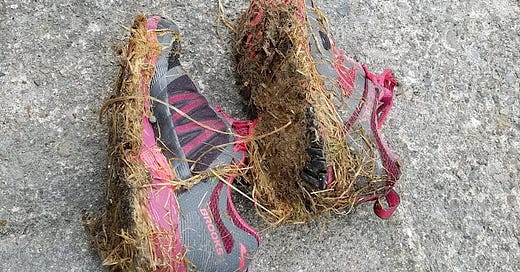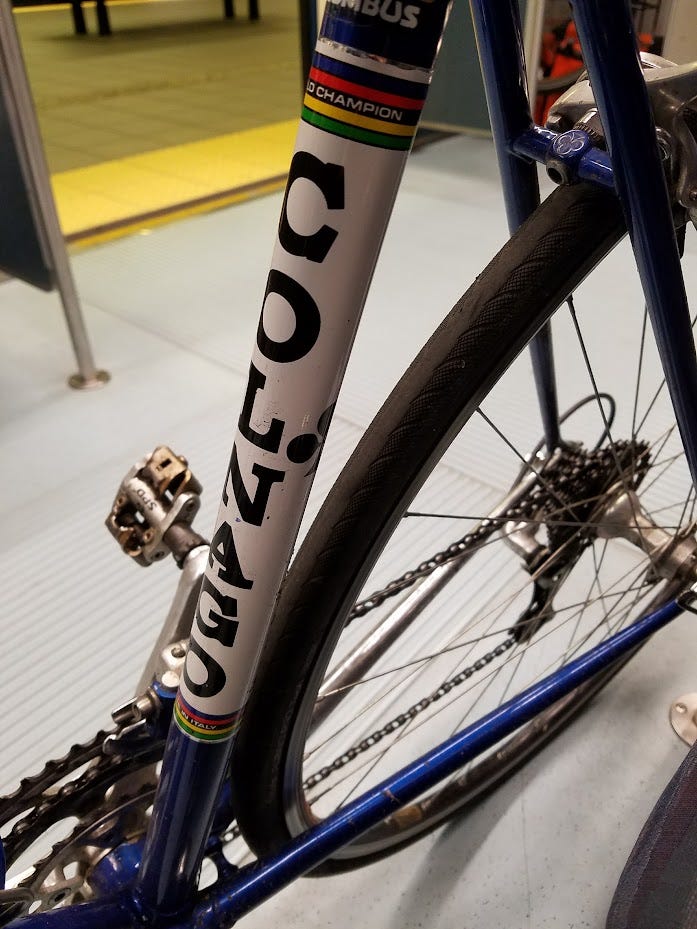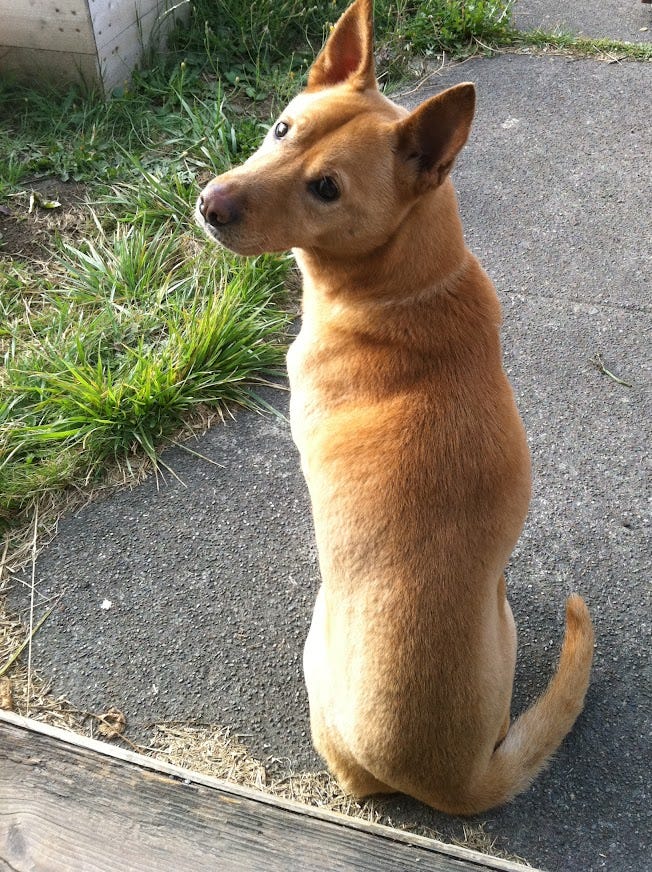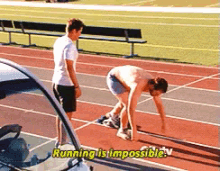Around the point in my life where my 40th birthday was looming, I began to feel a sense of mortality that hadn’t existed before. I was approaching the hallmark of “midlife,” and there was an urgency within me to find some sort of momentum.
Bottom line, I didn’t want to die.
Don’t get me wrong, I also don’t want to live forever. I appreciate that life is short, that we should all find joy in the small things, that other lives around us may be fleeting. Knowing we don’t have forever makes today that much sweeter. But at 39, I was nowhere near feeling done or resolved in my life, and I was – for the first time – really struck with knowing that I was approaching a halfway point.
At 39 I had been with my wife for 13 years, married for 5 years (we needed the repeal of DOMA to have a legal marriage in the US). Our kids were 5 and 2 years old. We had a nice house and two great dogs, my job was secure. There was nothing to cause any panic.
But still, I knew I needed to do something with my worries1.
I digested a lot of movies in the 80s and 90s about people mostly men who hit their forties and immediately ended up in a midlife crisis. What was the cliché? Leave your wife, buy a sports car, find a hot young girlfriend who doesn’t mind your combover… None of that felt right to me.
Tangent alert.
Okay, so I did buy the Robin equivalent of a hot new sportscar, but most people aren’t into old bicycles like I am, so it doesn’t feel as obvious. And bikes rarely cost what cars cost, even the collector editions. I’m still in love with the Colnago I found at that point in my life, and it receives the appropriate oohs and ahhs when I roll into bike shops with it (thank goodness there are other bike geeks in the world).
Back to the panic.
When faced with my mortality, I took the most obvious solution at hand. I should start running.
“Sorry, what?”
That’s right, me, that kid who couldn’t run across the football field in elementary school without collapsing, that same kid who failed every single President’s Physical Fitness test they threw at me in my Midwest upbringing, the least physically coordinated human you’ve ever met who is capable of effortlessly tripping over a smooth flat floor…… That’s the person who decided to take up running.
Let’s just take a moment to deep dive into exactly HOW physically inept I am (and have always been). We once had this really great (also really awful) dog named Jodie. She was a used dog with low mileage, like all of our dogs. Jodie didn’t really know how to fetch, but she enjoyed the thrill of running for fast-moving prey, and so I would frequently throw a tennis ball or nerf football for her. She would run for it, reach with her mouth wide open, and promptly stop, because “Ew, dirty ball on the dirty ground.” But it was good exercise for her humans who then had to walk over and find the ball themselves. The thing is, more often than not, I would bean her in the head with the ball when I threw it. I’m a late releaser (oh how I wish this newsletter came with its own laugh track!). I hold the ball too long and throw on the downward arc, and BOOM, nogging crush every time. Ask me to aim for her head, and I could never have hit the target. I am hopelessly incapable of aiming anything correctly. It got so bad that Jodie started to cringe anytime I wound up to throw a ball for her. The upright ears would tuck down, her eyes would slam shut, and she would brace for impact.
Nevertheless, I had dreamed about running since I was a kid. I just didn’t have a clue how to do it. I’d always tried and ended up breathless, covered in sweat, heart pounding. I believed I had “bad knees.” I’d escaped from PE over and over as a kid for various excuses. Bottom line, unless it was cycling, I couldn’t do it.
And that had to change if I wanted to maintain some level of health and fitness into midlife and beyond.
At 39, I’d birthed two kids, I was working incredibly long hours, I was stressed out, and I weighed more than ever before. I needed some big changes to help me wake up, fix those problems, and give me something to look forward to over the next four decades. I picked up a couch to 5K book at the library, and I got started.
The first weeks weren’t hard. They were impossible.
Nothing can make you feel out of shape like trying to run and breathe at the same time. This is not an innate skill, it must be learned. And I was teaching myself out of a book. Why not connect with a local group and get some help? Why, shame, of course. And humiliation, embarrassment, fear of rejection… you name it. I needed to make some baseline progress on my own before I was willing to subject myself to criticism. I started on a treadmill in the gym, running one- and two-minute intervals at the slowest pace I could manage above walking. Two minutes turned into four, and then six, and soon I realized I was running – really running – for up to eight minutes without needing to stop.
And then I went outside.
My first outdoor run was on a dirt track near where we lived at the time. It was level and safe, and no one was around to watch. NOT being in a guy was amazing. Breathing the cool, fresh air felt invigorating. And my running came faster and easier than on the treadmill. It was official, I was a real runner.
I ran that entire year on nothing but joy, adrenaline, and a fear that if I stopped I would gain back the twenty pounds I had lost. I ran more than four days a week, every week. I started pushing the mileage up. I’d made it through a couple of 5K fun runs, and I wanted to try for a half marathon.
A note of caution to anyone reading this who is considering following my formula – Please don’t.
Just before my 41st birthday, only weeks before a half marathon and a 10K run I’d registered and paid for, I tore the meniscus in my left knee. This was a rehash of an old injury from nearly twenty years earlier, when I’d torn my meniscus and my ACL. The pain and swelling were familiar, and the MRI proved the results. I was out of the running game for upwards of 6 months to heal and recondition my body.
Things could have been dire. And, indeed, my mental health took the toll of losing out on my running lifestyle. I’d come to depend on the routine, on the schedule and the repetitive nature of logging miles, running hills, planning my routes. But the one thing I had not done was build strength. And my body brought things to a halt until I figured that piece out.
If you have ever needed physical therapy, you probably know that it’s rarely effective unless you do your homework. I’d been in PT for a number of other things (like the aforementioned ACL tearing event), and I never did my homework. I hated that stuff. It was boring and stupid and not fun. But this time, knowing what I had lost, needing to get that part of myself back, I went full-bore into the exercises and stretches I was given. My doctors were stunned at how quickly I progressed, how honest I was about the limitations I felt and where I wanted to modify a stretch to get more out of my recovery. And yes, I was crushed to lose out on the half marathon and the 10K I’d invested in. But I got something better out of that tragedy than I ever expected.
I got strong.
By the time I graduated from PT and rejoined the running world, I knew things about my posterior chain. I was fluent in the core exercises to support the torsion required during running. I understood the role of hip flexors and the pelvic floor. And I really cared about my glutes.
My full recovery meant that there was a shift in my workout routine every week. I knew then that I needed to earn my miles by prepping my body with the strength and flexibility it needed to get me through those distances. I planned out strength routines three days each week and ran the other three, resting fully on one day. My running felt better. The miles came easier. I had become a confident runner, one who knew how to prevent injuries before they happened.
Fast forward to more recent times, and I still love running. I love the freedom, the connection to nature and my neighborhood, the brief smile and nod I can give to other runners on these quiet roads near home.
I love the strength even more.
Best of all, I know that I can recover from anything. I’ve got those tools. And I have the patience of being older, of knowing that my body needs time to recover, even from the small setbacks.
Running and weight lifting are the most important aspect of my weekly routine. When interruptions come up and I lose that time, I suffer dearly. I’m in that phase now, where I’m not yet physically able to run, and my lifting restrictions are still significant. But I’m able to walk, and I’m able to stretch. I’m at a new starting point, and I have the confidence to know where to put my focus to get to the next great step in my path.
I’m not running because I’m afraid of dying now. I’m running to celebrate the movement my body gives me today. It’s still clumsy and maybe a bit goofy-looking, but it feels good, and I’m determined to make the most of it every single time I can.
Your trans friend,
Robin
Deep down, I think I knew this was an awakening of my transgender self, that part of me trying to say out loud, “Hey, listen, we need to look at this thing we’ve been avoiding for 40 years.” But that doesn’t happen overnight for anyone. It certainly didn’t happen that way for me.








